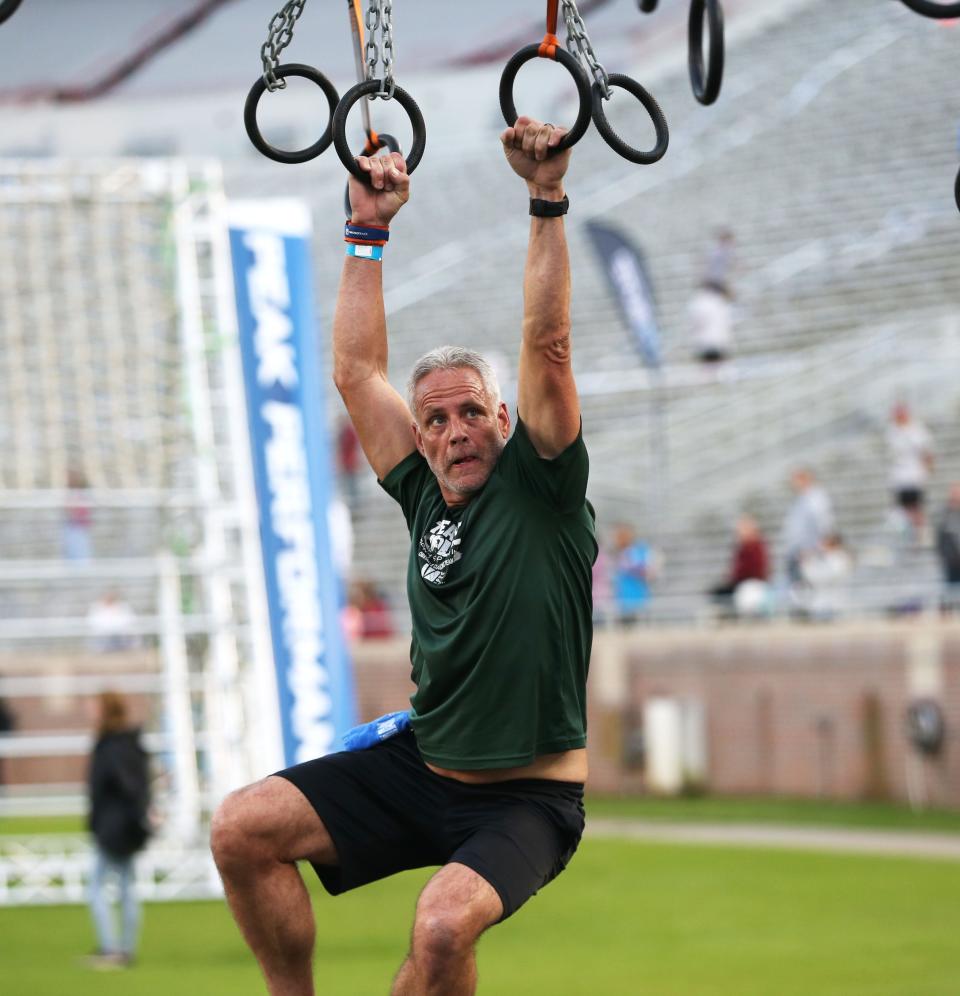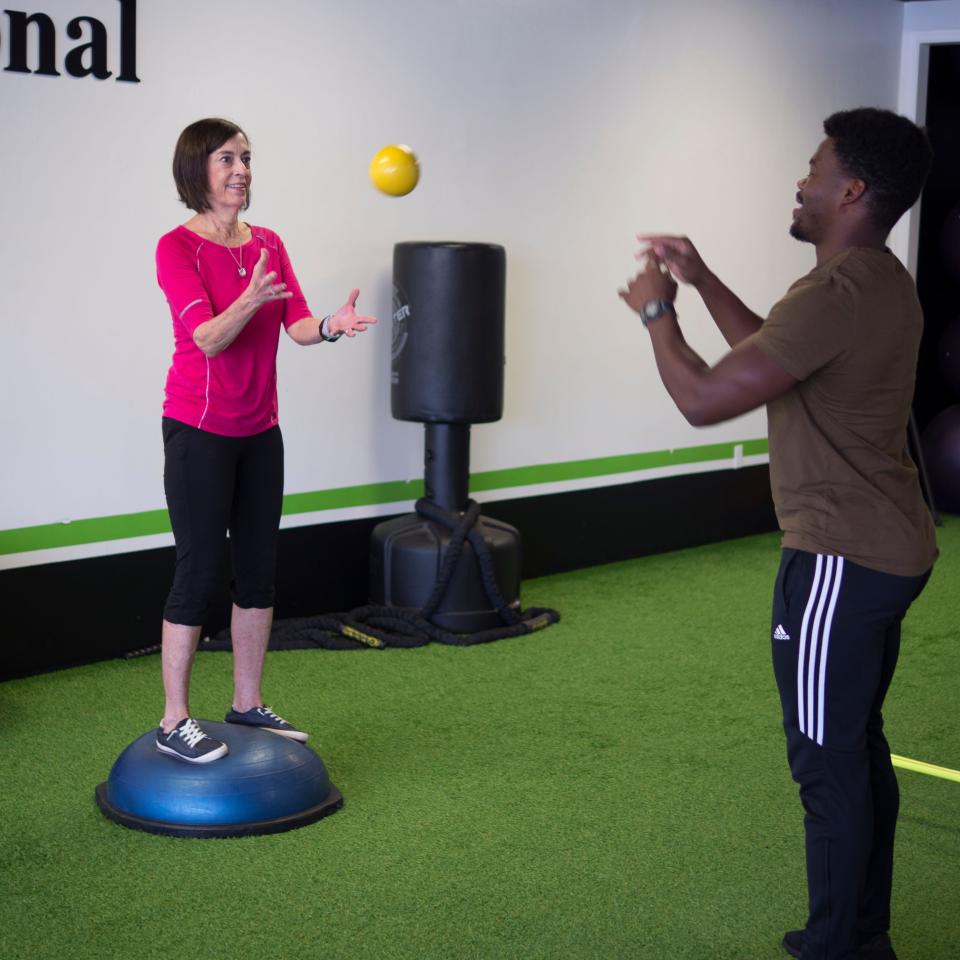Practice a more active lifestyle for an improved quality of life | Mark Mahoney
Almost five years ago I provided some suggestions for individuals to consider for living a more active lifestyle. These tips are even more relevant in 2023 as our health and wellness has not improved significantly. Practicing prevention during our lives can provide the opportunity for a better quality of life through a more active lifestyle.
The four areas of endurance, strength, flexibility and balance can provide part of a recipe for success.

1. Endurance: Build heart health
Endurance, or aerobic, activities increase your breathing and heart rate. These activities help keep you healthy, improve your fitness, and help you do the tasks you need to do every day. Endurance exercises improve the health of your heart, lungs, and circulatory system. They also delay or prevent many diseases that are common in older adults such as diabetes, heart disease and osteoporosis.
Try to build up to at least 150 minutes (2 1/2 hours) of moderate endurance activity a week. Being active at least 3 days a week is best. Remember, these are goals. Some people will be able to do more. It’s important to set realistic goals based on your own health and abilities.

When you’re ready to do more, build up the amount of time you spend doing endurance activities first, then build up the difficulty of your activities. For example, gradually increase your time to 30 minutes over several days to weeks by walking longer distances. Then walk more briskly or up steeper hills.
Be aware of some safety tips which include:
• Do a little light activity to warm up and cool down before and after your endurance activities
• Be sure to drink plenty of liquids when doing any activity that makes you sweat
• Dress in layers when exercising outdoors so you can add or remove clothes if you get cold or hot
2. Strength: Lift or push weight
To strengthen your muscles, you need to lift or push weight. Stronger muscles can make it easier to do everyday things like get up from a chair, climb stairs, and carry groceries, open jars, and even play with your grandchildren. Lower-body strength exercises also will improve your balance.
Try to do strength exercises for all of your major muscle groups on 2 or more days per week for 30-minute sessions each, but don’t exercise the same muscle group on any 2 days in a row.
Gradually increase the amount of weight you use to build strength. Start out with a weight you can lift only 8 times. Use that weight until you can lift it easily 10 to 15 times. When you can do 2 sets of 10 to 15 repetitions easily, add more weight so that, again, you can lift it only 8 times. Repeat until you reach your goal.
Some safety-related tips to consider include the following:
• Talk with a qualified health professional if you are unsure about doing a particular exercise, especially if you’ve had hip or back surgery
• Don’t hold your breath during strength exercise as holding your breath while straining can cause changes in blood pressure
• Breathe in slowly through your nose and breathe out slowly through your mouth; breathe out as you lift or push, and breathe in as you relax
• To prevent injury, don’t jerk or thrust weights, but use smooth, steady movement

3. Balance: Prevent falls
Each year, 3 million older people are treated in emergency departments for fall injuries. Balance exercises can help prevent falls and avoid the disability that may result from falling.
You can do balance exercises almost anytime, anywhere, and as often as you like. Also try lower-body strength exercises because they can help improve your balance. Do the lower-body strength exercises 2 or more days a week but not on any 2 days in a row.
Challenge yourself as you progress. Start by holding on to a sturdy chair for support. When you are able, try holding on to the chair with only one hand. With time, hold on with only one finger, then with no hands at all. If you are really steady on your feet, try doing the exercise with your eyes closed.
Some safety tips to consider include:
• Have a sturdy chair or a person nearby to hold on to if you feel unsteady
• Talk with your doctor if you are unsure about doing a particular balance exercise.
4. Flexibility: Move more freely
Flexibility, or stretching, exercises give you more freedom of movement for your physical activities and for everyday activities such as getting dressed and reaching objects on a shelf. Stretching exercises can improve your flexibility, but they will not improve your strength or endurance.
Do each stretching exercise 3 to 5 times at each session. Slowly and smoothly stretch into the desired position, as far as possible without pain. Hold the stretch for 10 to 30 seconds. Relax, breathe, then repeat, trying to stretch farther. As you become more flexible, try reaching farther in each exercise. But don’t go so far that it hurts.
Consider the following safety tips:
• If you’ve had hip or back surgery, talk with your doctor before doing lower-back flexibility exercises;
• Always warm up before stretching exercises;
• Always remember to breathe normally while holding a stretch; a mild pulling feeling while you are stretching is normal so if you feel sharp or stabbing pain or joint pain, you’re stretching too far and you need to reduce the stretch so it doesn’t hurt;
• Always stretch with a smooth, steady movement and don’t jerk or bounce into the stretch as it may cause injury;
• Avoid “locking” your joints but straighten your arms and legs when you stretch them, but don’t hold them tightly in a straight position.
• Remember to always keep them slightly bent while stretching
Additional resources
Go to the following link for an infographic about a healthy diet and exercise which you can share at nia.nih.gov.
Another resource from the Mayo Clinic Health System, “7 tips to live a happier life” is available at mayoclinichealthsystem.org.

Mark A. Mahoney, Ph.D., has been a Registered Dietitian/Nutritionist for over 35 years. He can be reached at marqos69@hotmail.com.
This article originally appeared on Tallahassee Democrat: Four ways to move your body, improve your health this year

